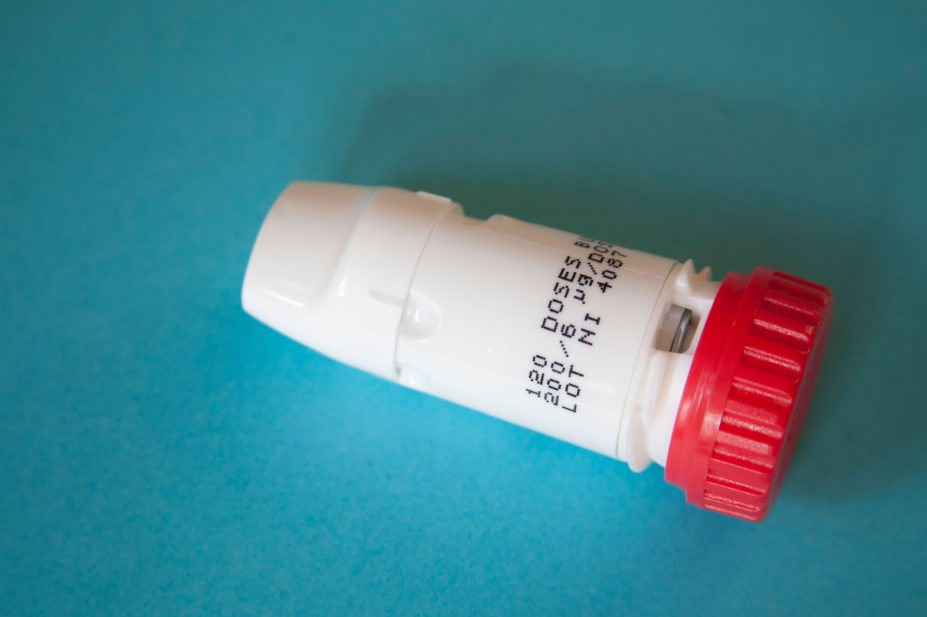
Kennedy Photography / Alamy Stock Photo
Switching from a metered-dose inhaler (MDI) to a dry powder inhaler (DPI) more than halved patients’ inhaler carbon footprint without loss of asthma control, a post-hoc analysis of the Salford Lung Study in Asthma, has suggested.
The analysis, funded by the pharmaceutical company GlaxoSmithKline, was based on a subset of 2,236 patients from the Salford Lung Study in Asthma who, at baseline, were using a pressurised MDI-based asthma maintenance therapy.
During the study, patients were randomised to either be switched to a DPI maintenance therapy (fluticasone furoate/vilanterol) or to continue using predominantly pressurised MDI maintenance therapy, and were managed in conditions similar to everyday clinical practice.
Annual carbon dioxide equivalents (CO2e) were then calculated for the total number of maintenance and rescue inhalers prescribed, and asthma control was assessed by way of the Asthma Control Test (ACT).
The researchers found that annual CO2e kg per patient using maintenance plus rescue therapy was significantly lower in those switched to a DPI, compared with the group who continued with their MDI; annual CO2e in the DPI group was 108kg (95% confidence interval [CI] 102 to 114) compared with 240kg (95% CI 229 to 252) in the usual care group.
Asthma control was also consistently superior over the 12 months in the DPI group, compared with usual care.
“If these carbon savings were scaled up to include all adult patients with asthma in the UK who use a [pressurised] MDI (n≈3 million), this could result in an annual reduction of approximately 390 CO2e kilotons,” the authors calculated.
“This saving would represent approximately 40% of the total carbon footprint due to MDIs in the UK, which is reported to be one megaton of CO2e.”
They added that the carbon footprint could be “further reduced” through switches from MDI to rescue medications in DPIs, or to alternative lower-carbon footprint rescue inhalers “if, and when, they become available”.
Toby Capstick, consultant pharmacist in respiratory medicine at Leeds Teaching Hospitals NHS Trust, described the analysis as “interesting”.
“The important thing to note is that when patients were changed from a pressurised MDI to a DPI, inhaler technique training was provided, [which] reflects the standard of care that we would expect in patients who have their inhaler changed for any reason.
“The results from this study on asthma control and carbon footprint are only valid if inhaler technique training is provided.”
Capstick added that another issue was that patients in both groups continued to use seven to eight reliever inhalers each year, and that the authors noted that the inhaler footprint could be further reduced by switching pressurised MDI relievers at the same time as the maintenance inhaler.
“This certainly would be recommended, as using mixtures of DPI and aerosol inhalers is known to result in poorer asthma control,” Capstick said.
In September 2021, a document published by NHS England and Improvement, detailing plans for primary care networks (PCNs) for 2021/2022 and 2022/2023, set out a suite of incentivised targets to support improved respiratory care and health outcomes for asthma patients, as well as ambitions to reduce avoidable carbon emissions by encouraging the choice of lower carbon inhaler alternatives, where clinically appropriate.
One specific PCN incentive, adopted in October 2021, encouraged switching patients from MDIs to DPIs and soft mist inhalers.
Read more: Greener inhalers: are we setting the wrong targets?


